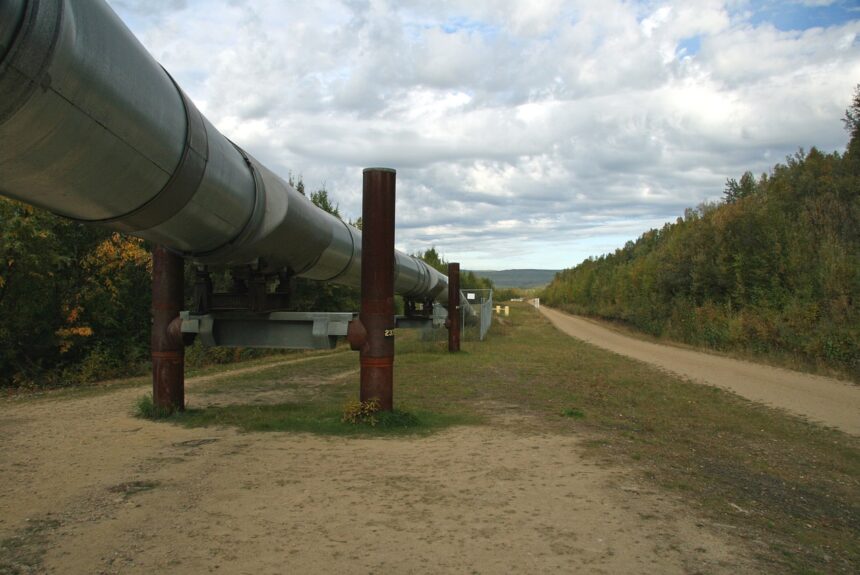Climate change is an extraordinarily complex challenge that requires a suite of solutions. One often overlooked necessity is pipelines. While many relate pipelines to transferring oil and natural gas, pipelines are also critical for clean energy projects like hydrogen and sequestered carbon dioxide.
One study from Princeton University that outlines potential net-zero pathways estimates that the U.S. will need to build an estimated 21,000-25,000 KM of interstate CO2 pipelines by 2050 to meet carbon capture and climate goals. The current fleet of pipelines only connects less than 40 percent of the United States.
>>>READ: Crossing the Climate Chasm Through the Gulf of Mexico
Expanding and modernizing our nation’s pipeline infrastructure is essential to advancing climate and clean energy goals. The U.S. pipeline network can move clean energy to more American homes and businesses if given the opportunity to expand. Building out pipelines will stabilize the grid, make energy more affordable, and advance decarbonization efforts.
Recognizing the need to build additional pipelines, Representative Cathy McMorris Rodgers (R-WA) and Jeff Duncan (R-SC) recently introduced the Pipeline Safety, Modernization, and Expansion Act of 2023 which aims to expand and address the current flaws with the pipeline network. On the release of the bill, McMorris Rodgers and Duncan said:
“Pipelines are among the safest and most efficient ways to move the fuels that heat our homes, power our cars, and power our nation’s economy. Yet President Biden and Democrats are proactively working to shutdown America’s pipelines and prevent the necessary maintenance to ensure pipelines are operating safely and efficiently. The administration is also making it more difficult for new infrastructure to be built. This is preventing critical resources from getting to people who need them most…To address the needs of the American people, today, we are unveiling the Pipeline Safety, Modernization, and Expansion Act of 2023, which will ensure we can build more pipelines, maintain our current critical infrastructure, operate pipelines safely, transport more energy, and lower energy prices.”
The bill will expand the existing pipeline network by granting the Federal Energy Regulatory Commission (FERC) the authority to issue any federal permit that is required for modernizing, expanding, and repairing current pipelines or constructing additional ones. The Pipeline Safety, Modernization, and Expansion Act will also strengthen safety standards for pipelines and increase fines for pipeline tampering while requiring the Pipeline and Hazardous Materials Safety Administration (PHMSA) to establish safety standards for facilities that transport CO2 via pipeline. These measures will provide regulatory certainty to the carbon capture industry and help the technology grow, which will in turn reduce U.S. carbon dioxide emissions.
This proposed legislation addresses many of the challenges that industry faces to build more pipeline infrastructure including differences in interstate policies, long permitting processes, and limited authority regulation. At a recent roundtable discussion hosted by the Bipartisan Policy Center, policy experts recommend that lawmakers give FERC more authority on the regulation of CO2 pipelines. While FERC oversees gas pipelines, there is no governing authority over hydrogen or CO2 ones.
While the bill would address several roadblocks to pipeline development, issues remain on the availability of Class VI injection wells, which are regulated by the Environmental Protection Agency (EPA) for the long term underground storage of CO2. To date, the EPA has only approved two VI wells at an ethanol plant in Illinois and is currently reviewing the applications of 69 projects. The agency believes it will take three years to approve each permit. As a report from ClearPath estimates, the U.S. will need at least 650 Class VI wells to keep up with the projected carbon storage needs. Additionally, the International Energy Agency (IEA) released a report which estimates the U.S. will need 100 more Class VI wells before 2030 to reach the net-zero carbon goals.
>>>READ: How Trains Can Help Tackle Climate Change
To speed up the permitting process for Class VI wells, some states have been granted Primacy by the EPA. Primacy allows a state rather than the federal government to regulate and permit Class VI wells under stricter environmental standards. North Dakota and Wyoming have been the only states to receive Primacy, while Louisiana, Texas, Arizona, and West Virginia are undergoing the approval process. Representative Dan Crenshaw (R-TX) and August Pfluger (R-TX) recently introduced the Primacy Certainty Act to speed up the timeline for approval for companies that are looking to use or build Class VI wells.
As the private sector continues to invest in carbon capture and hydrogen, the U.S. will need to rapidly expand its pipeline infrastructure. A supportive policy framework that empowers innovators and entrepreneurs will be necessary to meet these goals. Permitting reform to modernize and expand pipeline infrastructure is long overdue, and the proposed legislation by Reps McMorris Rodgers and Duncan is a welcome solution.
The views and opinions expressed are those of the author’s and do not necessarily reflect the official policy or position of C3.
